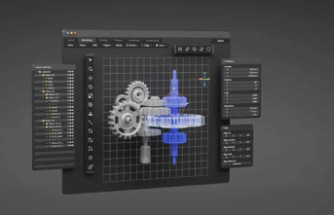Sensor technology has grown rapidly over the years. As such, non-contact motion sensor technology is now adopted widely due to the increasing need for high-precision measurement. Many industrial applications now require devices which can measure with higher accuracy and greater resolution. In addition to this, there is also a growing trend in measuring against challenging surfaces and conditions. These conditions also require sensors which can withstand extreme temperature changes and exposure to corrosive compounds.
There are several types of non-contact linear sensor technologies used today. Each type has specific strengths and limitations which determine how suitable they are for some applications. It is important to understand these differences as a guide in selecting the right type of sensor.
Eddy-current non-contact position sensor
Eddy-current position sensors use inductive measuring by extracting energy emitted from a circuit’s oscillation. The main advantage of an eddy-current sensor is that it is suitable for all applications using ferromagnetic and non-ferromagnetic metals which have electrical conductivity. Another advantage of an eddy-current sensor is its resistance to moisture, pressure, dust, and dirt. The device itself is relatively small and can withstand high temperature ranges.
Apart from these advantages, one limitation of an eddy-current sensor is that the output depends on the electrical and magnetic characteristics of the target object. This means that each sensor needs individual calibration
Capacitive non-contact position sensor
Capacitive sensors achieve near ideal sensitivity and linearity to metals. The technology itself is stable, and the target material's electrical conductivity does not impact the sensor's measurement accuracy. Capacitive sensors are also resistant to high-temperature conditions. However, it is only ideal when the working environment is clean and not exposed to moisture.
Linear variable differential transformer
Perhaps the most common of all non-contact sensor technologies, an LVDT is a type of electromechanical transducer which converts the linear motion of a target object into electrical signals. Like most non-contact sensors, the frictionless operation eliminates the negative impact of friction on the sensors internal mechanism. This results in a longer life cycle and infinite repeatability.
Non-contact sensors are ideal in many industrial applications because of their resistance to damage. An LVDT has an advantage over other types of non-contact sensors because of its inherent ruggedness and robustness. Many sensors today are subjected to harsh working conditions and exposed to corrosive materials and chemicals. Non-contact sensors are suitable for use even in high-pressure and underwater working environments.
Choosing a sensor supplier
Suppliers of non-contact sensors, like LVDTs, adhere to the strictest quality standards and fabrication methods. Nonetheless, it is still essential to compare different suppliers according to their expertise and years of experience. Most suppliers offer pre-fabricated sensors ready for installation, but in some instances, an application may require custom sensors with specific parameters. To find the perfect sensor which fits the requirements needed for the application, look for a supplier which offers customisation. Customising a sensor means you can choose the design and request exact measurements to produce a sensor which will have the precise output needed for the intended application.
Date Of Update: 22 October 2018, 07:04












